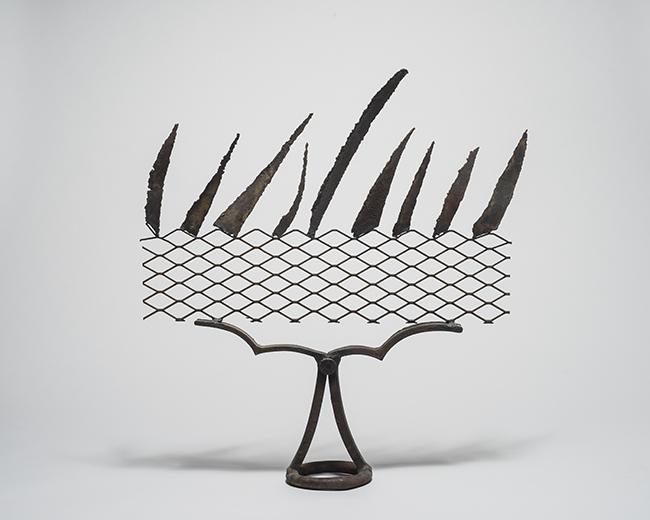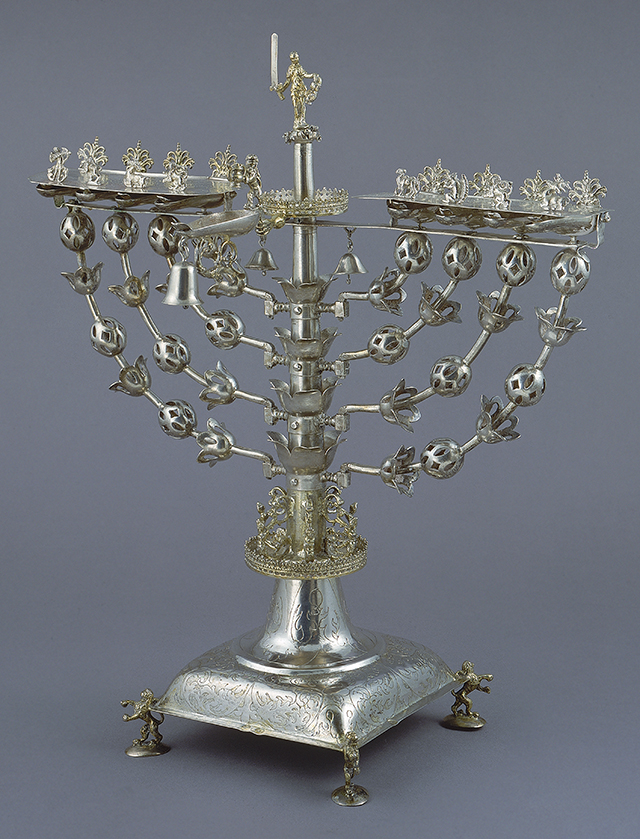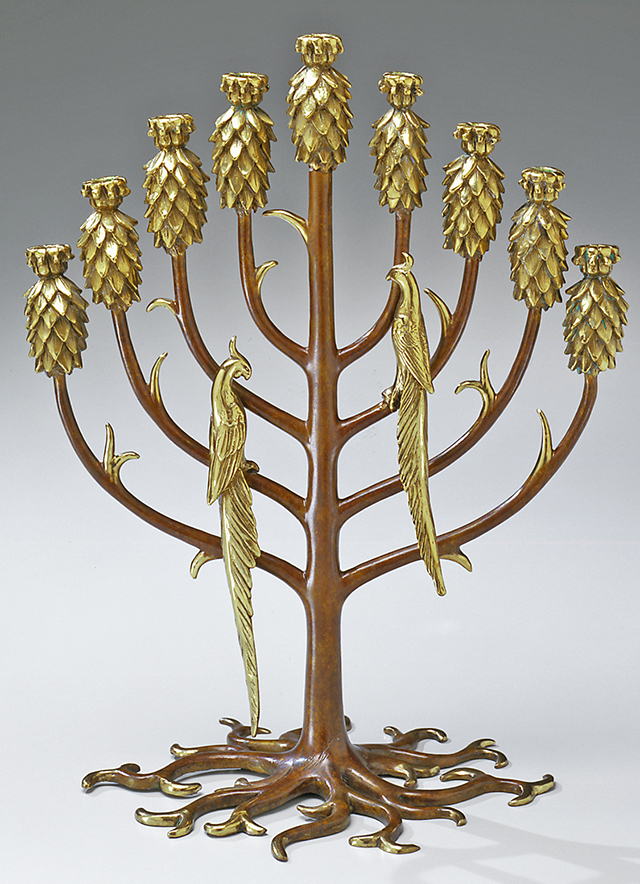How Hanukkah Lamps Tell the Story of a People

My favorite menorah growing up was the smallest and shabbiest one we owned. But it was also the most special. It was made in Palestine and purchased by my great-great-grandfather in Austria, an object that he considered so precious that it became one of the few items he brought to the U.S. as he and the rest of the family fled Nazi-occupied Austria. It remains our sole tangible connection to these earlier generations, and so commemorates not just the Hanukkah story of the Maccabees’ triumph over Antiochus, but of our family’s—and Judaism’s—survival.
Such multilayered personal, historic, and cultural stories are embedded within the Hanukkah lamps on display in Accumulations: Hanukkah Lamps, now on view at the Jewish Museum in New York, a frequent National Endowment for the Arts grantee. Of the museum’s nearly 1,050 lamps—the world’s largest collection—81 are on display, arranged by material and highlighted for their history and artistry.

“There are some [made from] more luxurious materials, and some simpler materials,” said Susan Braunstein, a senior curator at the museum, and the organizer of the exhibit. She noted that rabbinical texts prescribed the order of materials to be used for Hanukkah lamps, beginning with precious metals such as gold and silver if available, and even ephemeral materials such as acorns and pomegranate peels. Studying the lamps and “decoding” them, she said, “gives you more specific information about how Jews were living in a certain time and place.”
She noted one lamp on display, an ornate silver piece from Nuremberg, Germany, dating from between 1716 to 1735. Braunstein said that at the time, Nuremberg was known for its silversmithing, and the lamp on display is typical of the features and embellishments of the city’s silver work. But she noted that during the period when the lamp was produced, Jews weren’t allowed to live in Nuremberg, and had to apply and pay for a day pass to enter the city. Who, she wondered, could afford this beautiful lamp, as well as the fees associated with the necessary travel? Perhaps it was a Jewish business owner, or someone who supplied the royal court?
Another lamp bears a tax stamp from the Austrian Empire. Following the Napoleonic Wars, the emperor demanded all silver to be given to the state to help pay for war costs. To retain precious silver, a family would have had to pay a tax equivalent to the value of the object, and a “tax paid” symbol of sorts was then stamped on the piece. Again, Braunstein invites us to imagine a family who felt so strongly about their lamp to have paid this tax. What might their lives have been like during and after the wars?

Of course, many lamps chronicle more recent narratives that span well beyond geo-political history. In a collection of lamps from the 1980s, American artist Larry Kagan embraced the post-modern moment, documenting the country’s artistic movements and aesthetics. “Everyone was experimenting and pulling things apart and trying to reconstruct them in a new way,” said Braunstein. “[Kagan’s] idea was to take [the menorah] as far as he could go.”
Another recent favorite of Braunstein’s is the “menurkey,” made by nine-year-old Asher Weintraub in 2013, the year Hanukkah coincided with Thanksgiving. “He thought it would be cool to make a menorah in the shape of a turkey,” said Weintraub. “It represents how Jews have incorporated American holidays into their family traditions.”
Braunstein hopes that as people peruse the exhibit, they’ll come to see how Hanukkah lamps “open up a lens into the way people lived in certain places, religiously or economically or socially,” she said. “I find those lenses into moments of lives past so exciting. I hope people will appreciate it.”




